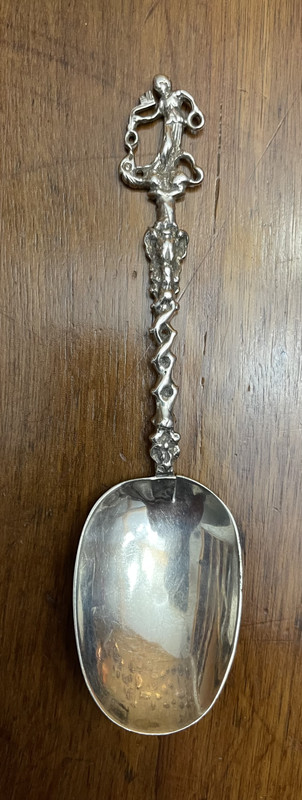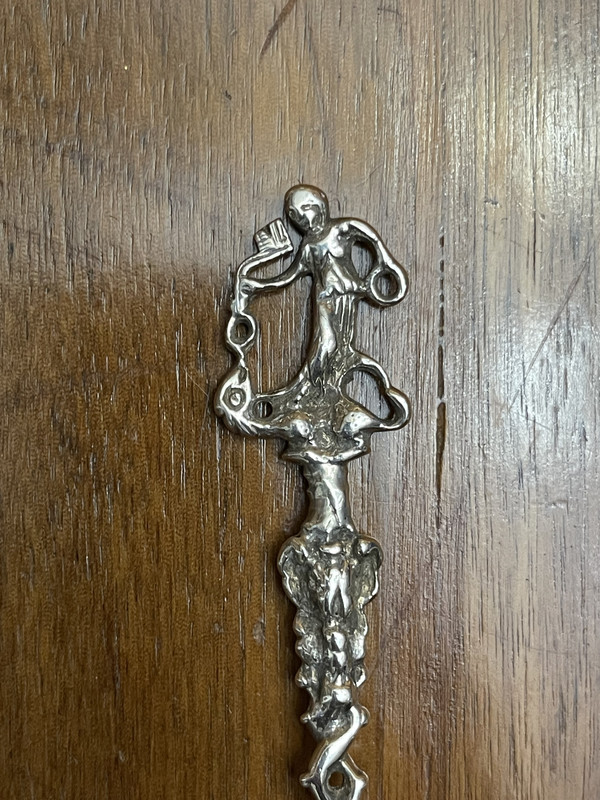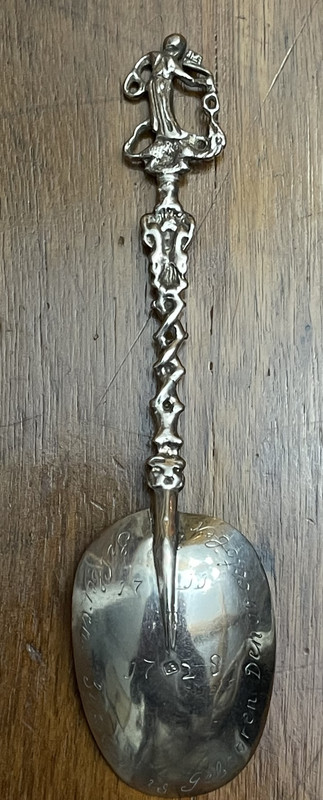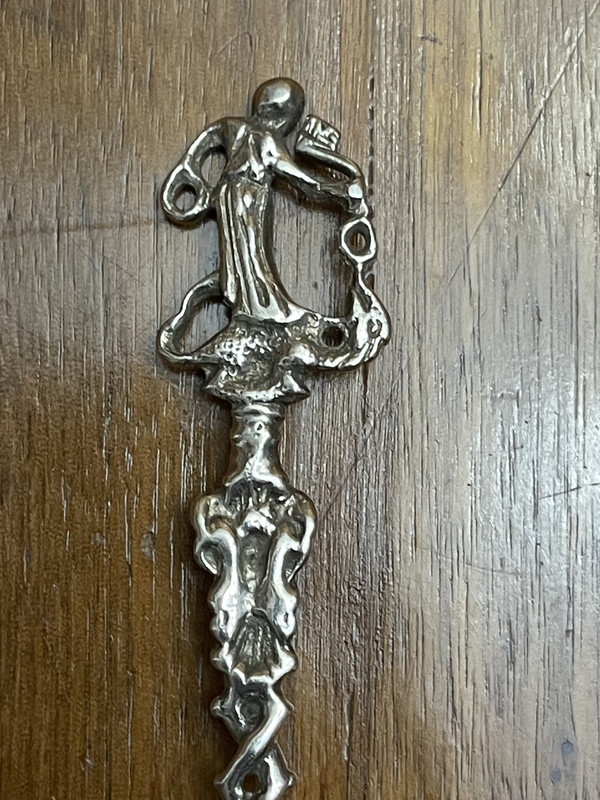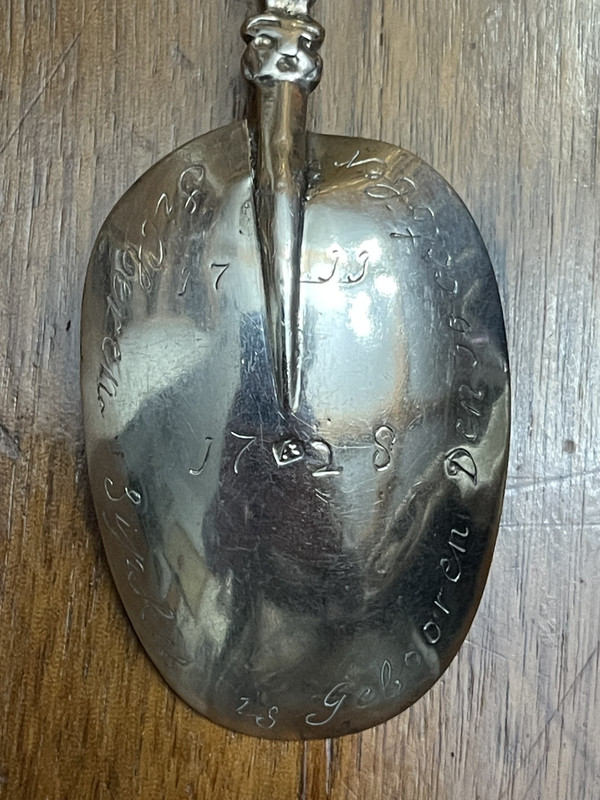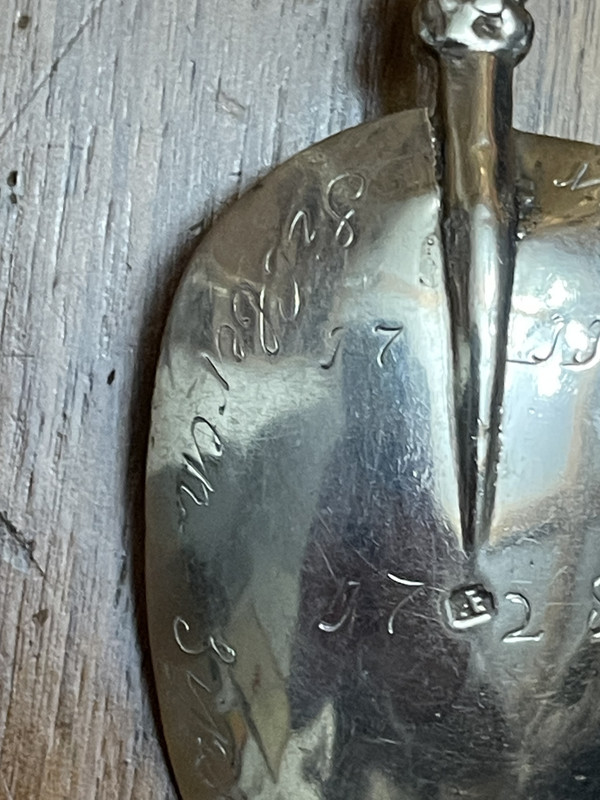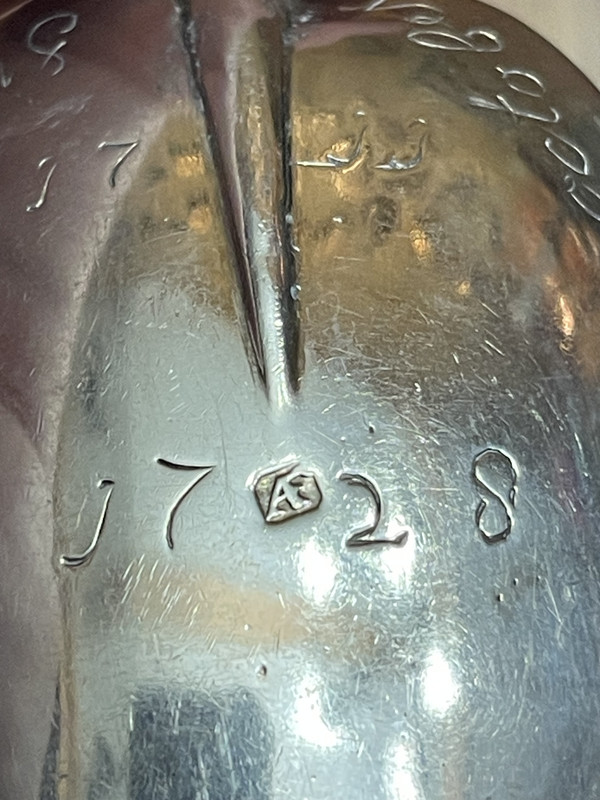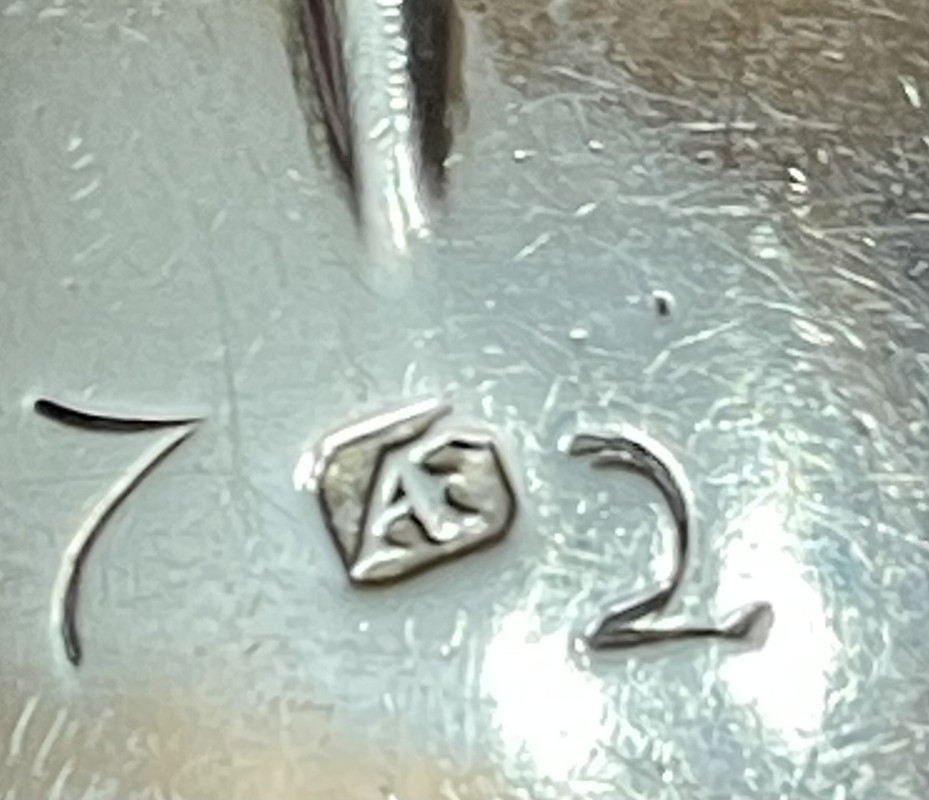Silver birth spoon, the angel chaining the dragon, the finial shows an angel with a key in the right hand. In the left hand the angel has a chain with a dragon lying on his back.
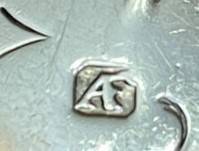
AF in monogram/conjoined could be for the Leeuwarder Aene Feenstra, baptized on May 22, 1744, active 1775-1807. He also used the maker's mark Six-pointed star. Aene was married to Eduarina Oudendaal, in May 1767. He died on January 5, 1807.
Peter.
Source;
Karel Citroen, Dutch goldsmiths'and silversmiths' marks and names prior to 1812, page 17
